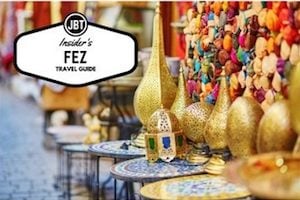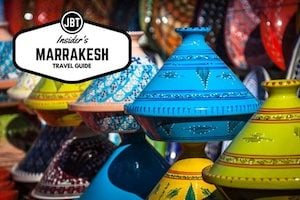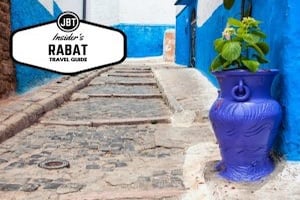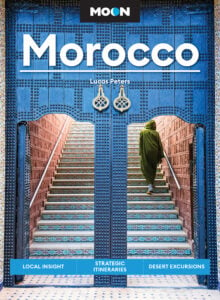Music and dance are an integral part of Moroccan life. During a trip to Morocco, you may witness processions of dancing villagers parading through the streets, or you might be kept awake late at night by the sound of rhythmic drums and the piercing ululations of wedding celebrations. While music and dance in Morocco can usually be categorized as indigenous Berber or classical Arab, you will also see and hear African, European and Jewish influences in these traditional art forms. Whatever the origins, dancing in Morocco has a long, storied heritage.
Ghiaytas
Ghiaytas were dances traditionally performed in preparation for war by the Haha Berber tribes in the Atlas Mountains. This dance is a show of courage for young men going off to battle. The choreography includes war-like moves such as pretend shooting. During much of the dance, rifles are held on the men’s heads. Accompanied by only a simple reed flute, the men shout rhythmically and stomp their feet. Today, ghiaytas is kept alive as a cultural tradition. The male dancers generally end the routine by simultaneously shooting blanks from their rifles at the ground.
Ouais
Described as a mixture of English ballet and classical Arabic music, the ouais is a graceful, fluid dance performed by women. The dancers wear copper cymbals on their fingers and are dressed in elaborately embroidered kaftans with silk belts. Most often performed at weddings, the ouais dance is accompanied by a one-stringed fiddle, two or three small mandolins and the simple rhythm of one musician pounding on a large piece of cast iron.
Ahidou
A dance of the Middle Atlas Berbers, the ahidou is performed by both men and women. All dancers stand in a circle, and their songs are lyrical and poetic. In addition to their matching blue cloaks with white stripes, the women are adorned with jewelry made of yellow amber beads and skillfully engraved silver. The men wear sleeveless, hooded gowns known as burnooses and have turbans tied on their heads. Some troupe members play tambourine while others sway and clap to the music.
Houara
The houara dance of Inezgane is also a mixed gender folk dance, but the performance troupe includes several men and only one woman. All dancers form a tightly packed circle and take turns coming in to the middle to show off intricately choreographed routines. One man may come in to the circle alone, or two men may come in to the circle together. As the tempo speeds up, the woman rushes into the center of the circle to end the dance. The houara has traditionally been used as a spiritual folk dance by Berber tribes.
Morocco is home to dozens of other types of dances including shikat (Arabic belly dance), guedra (a Tuareg dance for women), awash (a High Atlas tribal dance) and gnaoua (a highly acrobatic dance with sub-Saharan roots).
Taskiwin
The Taskiwin is recognized by UNESCO as Intangible Cultural Heritage, one of nine present in Morocco. The Taskiwin is a martial dance. It is very specific to the western High Atlas mountain range. The name of the dance comes from the intricately decorated horn each dancer carries with them while dancing — the Tiskt. Accompanied by the rhthym of flutes and tambourines, the dancers shake their shoulders.
Historically, this practice of this dance was a key means of socialization for young men and women. It was an important part of a larger social tapestry. It remains a dance that is transmitted through the generations by informal, direct practice and learning.
These days, the dance is only performed in a very small number of mountain towns and villages. It is at severe risk of disappearing entirely. Young people from these regions, largely due to the promises of globalization, have begun to shun their traditions in favor of more modern practices. Just over the past decade, where one used to find this dance, it has ceased to exists. In the few remaining communities where it remains, dancers are having difficulty finding people in the younger generations to pass their knowledge. In relation, the craftsmanship in relation to making the flutes and tambourines to make the music for this dance is also disappearing.
Written by Heather Carreiro.
Photo by Pro-Zak.







